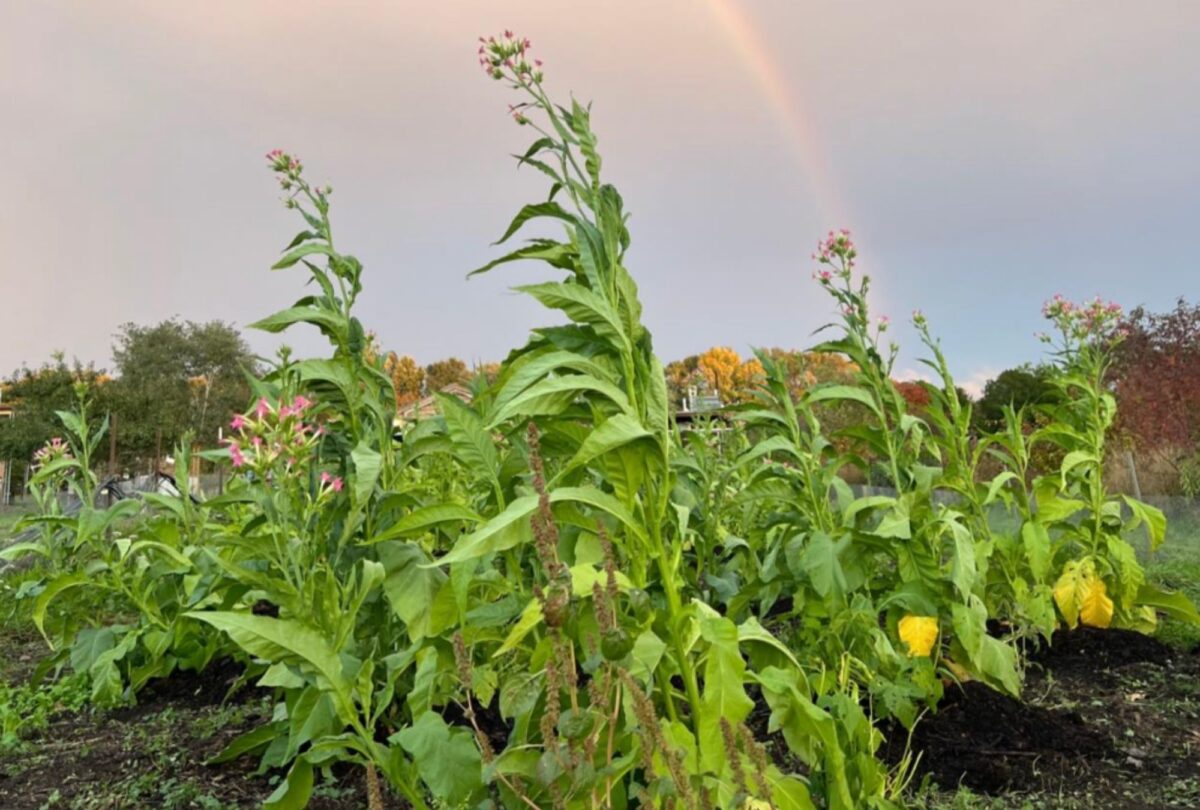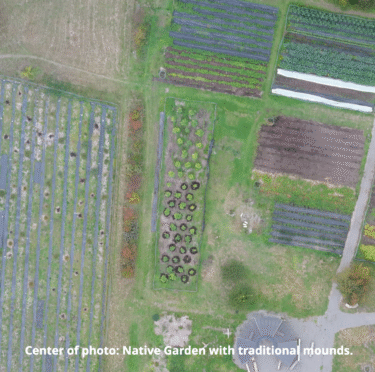Posted on January 22, 2025
Post categories: Landscape Architecture News Students Urban Design & Planning

A small but powerful plot at the University of Washington Farm is helping restore relationships—with the land, with culture and with each other.
The Native Garden, located near the Center for Urban Horticulture, is co-stewarded by wǝɫǝbʔaltxʷ – Intellectual House, the Burke Museum of Natural History and Culture and the UW Farm. Together, these partners support Native students through hands-on cultivation of traditional foods and medicines.
The space was first envisioned by Iisaaksiichaa Ross Braine, former director of wǝɫǝbʔaltxʷ. In 2017, he co-authored a memorandum of understanding with the UW Farm to create a garden focused on food sovereignty, cultural connection and student well-being.
Since its first planting in 2018, the Native Garden has shifted focus. While food production remains important, the space now also grows culturally significant medicinal plants. These offerings help meet the spiritual and emotional needs of Native students.
Each season, a Native student serves as a Food Sovereignty Liaison. They work closely with the UW Farm manager to guide planting, harvesting and care. The garden is maintained by students, with support from faculty, staff and community members.
“It’s through this dirty, sweaty, bug-filled, sweltering work that we begin to heal our relationships—with the land, our communities and ourselves,” writes Eric Alipio (B.A. English, UW ’20), a graduate student in landscape architecture and urban planning and student assistant at the Burke Museum.
 Deep Roots in Place
Deep Roots in PlaceAlthough the garden covers an area no larger than a tennis court, its significance runs deep.
The site lies just a half-mile from sluʔwiɫ, a former Coast Salish village. That land is now covered by University Village, but its legacy lives on through the Native Garden. It provides space for Indigenous knowledge and traditions to thrive once again.
The Burke Museum’s Waterlines Project maps the historic presence of Coast Salish communities on and around campus, helping contextualize the work of today’s Native students.
Now in its seventh season, the Native Garden continues to grow in purpose and impact. It offers students a space for learning, leadership and cultural expression—while also nurturing food, medicine and mutual care.
“Ahéhee’—we raise our hands in gratitude,” Alipio writes. In Hul’q’umi’num’ storytelling traditions, “raising hands” is a gesture of deep thanks, respect and shared understanding.